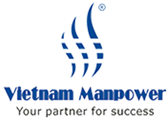Many workplace conflicts come not from mistakes, but from unclear expectations.
Expectation Engineering is the leadership skill of intentionally shaping, adjusting, and communicating expectations before work begins, ensuring that teams understand the standards, boundaries, and outcomes required.
This is one of the most underrated skills in management.
What Is Expectation Engineering?
It is the proactive process of:
-
defining what “good work” looks like,
-
establishing limits and non-negotiables,
-
clarifying responsibilities,
-
and aligning everyone’s mental picture of success.
Instead of fixing misunderstandings afterward, managers prevent them from happening.

Why This Skill Is Critical
Teams become stressed when they don’t know:
-
how to prioritize,
-
the exact scope of a task,
-
the acceptable range of mistakes,
-
the timeline flexibility,
-
or the standard of quality expected.
Expectation Engineering eliminates ambiguity.
How It Strengthens Management
Leaders who master this skill:
-
Improve team confidence
-
Reduce repeated questions
-
Lower conflict and frustration
-
Increase consistency and predictability
-
Build a workplace culture of clarity
Teams perform better when expectations are engineered rather than assumed.
Examples in Real Workplaces
-
Retail: defining exactly what “organized shelves” mean
-
Construction: clarifying which delays are acceptable and which are not
-
Corporate teams: specifying the expected quality of presentations
-
Hospitality: detailing how to handle peak-hour customer flows
When expectations are concrete, performance becomes stable.
:max_bytes(150000):strip_icc()/185674870-56a4f2635f9b58b7d0da0534.jpg)
How to Build This Skill
-
Start every task with a “clarity briefing.”
-
Describe outcomes, not only tasks.
-
Clarify what done actually means.
-
Agree on standards before work starts.
-
Review expectations after completion to reinforce understanding.
Expectation Engineering creates a culture where people don’t guess — they know.









Replies to This Discussion